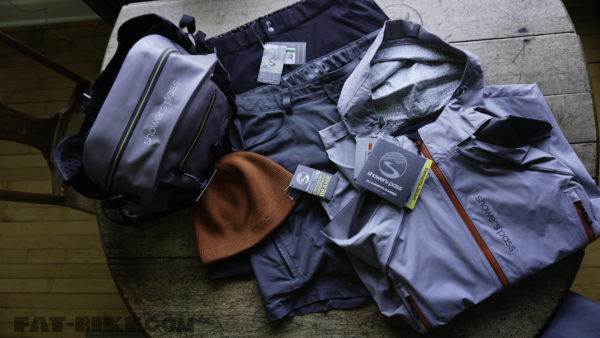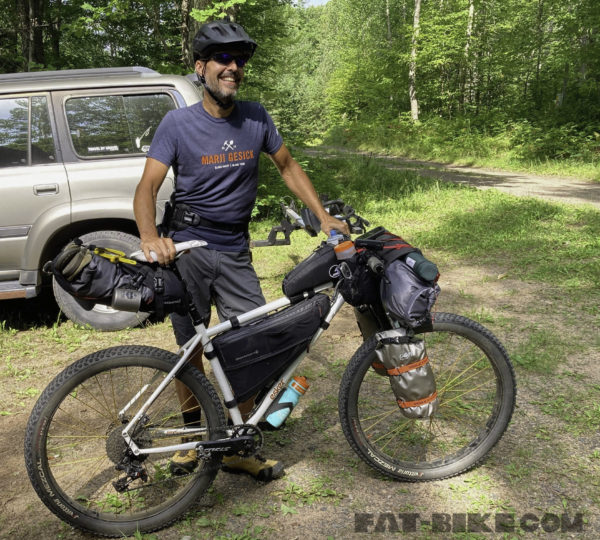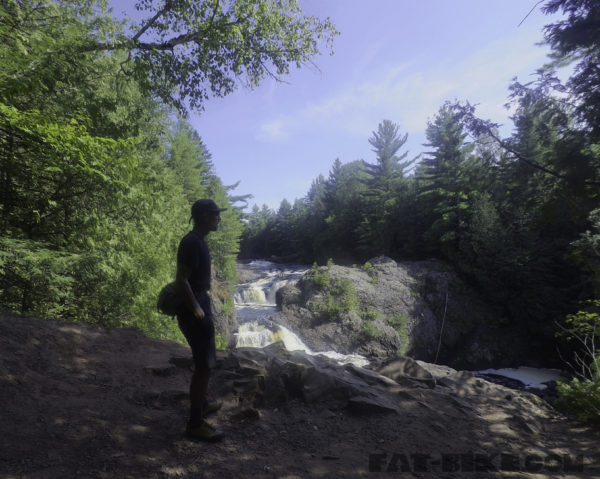
The fanny pack has an interesting history. Once celebrated as an essential accessory for the bespoke wilderness hiker, it’s undeniable charm and versatility crossed over to the urban landscape in 1980s. It had a good run until its popularity plummeted in the 1990s. To wear a fanny pack in the 2000s was deemed risky behavior. And yet, those daring enough to defy both fashion trends and accepted cultural norms, boldly marched on with their fanny packs. At its zenith, the gender-neutral fanny pack was paired comfortably with acid-washed jeans slung around a man’s waist or strapped around a hippy girl’s sundress.
I have my own personal history with the fanny pack. The last time I wore a fanny pack was probably around 1987. I was stumbling around the hillside at Alpine Valley, the infamous outdoor music venue in East Troy, Wisconsin. Jerry Garcia and company were entertaining me and 25,000 of my closest friends for several days of music, mirth, and mischief. My patchouli-scented, Guatemalan fanny pack carried an assortment of tools necessary for optimizing my multi-day experience. What did I carry in my fanny pack you wonder? Back then I was heavy on the mischief as a devotee of the Merry Pranksters, so I’ll let your imagination guide you. The fanny pack was THE choice for organizing your daily essentials, particularly at a Dead show. While the fanny pack has left my orbit over thirty years ago, all you need is a day at the Minnesota State Fair to know the fanny pack hasn’t traveled too far.
Around 2016 I started to notice the fanny pack again. The Fanny Pack, rebranded as a Hip Pack, began its triumphant comeback in some circles. Why not? Fashion and cultural trends are cyclical. The Hip Pack was making its appearance at the trailhead with mountain bikers seeking the flow, and on back country B-roads strapped to the hips of gravel riders. It makes sense. They are less cumbersome and cooler on a hot day than a backpack, capable of carrying all of your tools, a tube, a sandwich, even a hydration pack. While the rise of the fanny pack was undeniable, I resisted. I just wasn’t ready to return to the fanny pack. Until…
This summer I planned a 200+ mile bike packing trip chasing waterfalls in northern Wisconsin’s Iron County. Nearing the date of my departure, I got a call from my friends at Showers Pass. I told them what I was up to so they sent me an adventure kit with a few items to bring along including The Ranger Waterproof Hip Pack and a pair of Ranger Soft Flasks. The unique hydration bottle is designed to integrate with the Ranger.


Wearing a hip pack for an extended journey is unchartered territory for me. So, before I embark on this journey, I decided I should give it a good workout. You know, test the waters. I had to make sure I would be comfortable with this thing strapped to my waist for hours and hours for several days.
My bike packing route started in the heart of the CAMBA mountain bike trails twisting through Seely Pass, Esker, and Namekagon trails before connecting to the miles of gravel fire roads, ATV trails, and B-roads ahead. I needed some trail time before my trip. For the initial test of the Ranger Pack, I met a couple of friends at Levis Mounds near Neillsville, WI for some single-track fun. I loaded it up with a camera, a spare tube, a couple of energy bars, a multi-tool, mini-pump, and both Ranger soft flasks for hydration. The cavernous 7L pack had room for much more.

Initially, the load felt a bit heavy to be ripping around the trails. However, after a couple of strap adjustments I barely noticed it. The padded hip-hugging main strap is adjusted using a locking cam allowing for easy adjustment to the nylon strap. The load is managed by four smaller compression straps that cinch up the load to keep it from bouncing around when you’re riding. After an hour on the trail I didn’t even think about it. The load felt stable, and the additional weight on my waist was not a concern. After the second hour traversing the amazing Levis trails, my single frame mounted bottle of fluids was burnt, so I reached for one of the Ranger Soft Flasks. I was glad I had it along.
Satisfied I was going to be comfortable wearing a hip pack for three or four days following my test ride at Levis Mounds, I adjusted my packing list to include the Ranger Hip Pack. I left my rig at a friend’s place near Telemark, loaded up my bike, secured the hip pack, delivered some COVID safe high-fives and rode off.

The CAMBA single-track trails were the first test of the day. After two hours of single track the pack performed quite well, keeping the load evenly distributed across my waist. The pack continued to feel pretty good for the first five hours of riding, but after that I started to feel the contact point where the buckle connections meet on the side right side of the pack. The buckle was starting to dig in a bit. It wasn’t unbearable, but I was ready to unload it when I got to my destination after 65 miles and seven hours on the bike. I’m sure the overall fatigue of a long day riding a 50 pound fully-loaded bike didn’t help matters.

The Features

The $180 Ranger Waterproof Hip Pack features a fully welded construction with a single sided TPU layer for waterproofing. Other features include:
- 7-litre Volume
- Weight: 1.5 pounds
- External tool roll – perfect for keeping dirty/wet items separate
- 1 large compartment and 3 internal organizer pockets
- Adjustable waist fits waists size 24 – 48 inches
- Water-resistant zippers on the main compartment
- Internal stretch pocket
- Reflective accent on the side provides subtle low-light visibility
- Hip belt pockets for easy access while riding
- Locking hip belt for secure and custom fit
- D-ring on hip belt for clipping keys or other items
- 1-Ranger Soft Flask (16 oz) included
I appreciate the wide mouth offered by the waterproof zippers on the main compartment. Once inside, a number of mesh divider pockets allows great organization for those important items you want to reach quickly. The Ranger Soft Flasks fit snuggly in the mesh pockets between the main compartment and the belt. These easily accessible mesh pockets will probably fit a 12 oz beverage if you’re looking to add more liquid cargo. On the front of the pack you will find a tool roll that is secured by an adjustable buckle allowing you to strap down items like a wet jacket, or gloves. I used the small zippered pocket on the front of the tool roll to carry a lens cloth and an extra GU gel.

The Fit
Secured by a locking hip belt, the 3” adjustable waist strap will accommodate all body types. The waist strap is easily adjusted on the fly utilizing a cam-locking system. I found myself adjusting this regularly on my initial voyage at Levis Mounds, and again during the long days bike packing. Four compression straps enable you to adjust the load for a perfect fit and to reduce the movement of the pack’s contents. During my trip I carried my camera and tri-pod, tools, extra snacks, glasses, and a spare tube. I also stowed away my jacket in the Ranger pack once the sun warmed up. On day one I rode for about 8 hours relatively issue free. The only issue I had was the bottom edge of the buckle irritating the top of my iliac crest. The buckle connects off-center on the right side of your body. I don’t know if Showers Pass designers played around with the design to see if a centered buckle is better, but I’d be willing to give that a try to address this particular issue. Day two I covered 135 miles in about 13 hours. This was not by design. My Garmin sent me six miles down a snowmobile trail that terminated in a 200-acre bog. Not what I needed after 8 hours of pedaling. After I took a little break, I circled back to where I turned off onto the snowmobile trail. This little detour added over an hour and some bonus miles to a long day. On day two I had the same issue with the buckle digging into my ilium, but in this product’s defense, most people aren’t riding for freakishly long hours like this. The compression straps on the sides did an amazing job of keeping the pack’s contents in place and relieved some of the pressure of the hip belt.

The Summary
Since I’m no longer stumbling around Dead concerts, I really didn’t see myself igniting a reunion with the fanny (hip) pack. And yet, the Ranger Hip Pack has found a home with me. It performed extremely well under marathon conditions on the bike. Off the bike, the pack is equally impressive. On day two of my adventure, I took a break to explore one of the many waterfalls on the route requiring some hiking. The pack was a great companion up and down the trail. Having the externally accessible Ranger Flasks onboard was the icing on the cake. I really like these soft-sided bottles. Due to their unique construction, they take up very little space when they are empty. The waterproofing of the main compartment has proven invaluable during a number of St Croix River kayak fishing adventures this summer as well. The only real issue with the pack I encountered was the issue with the buckle bothering me. For that reason, I recommend this pack for rides of 3-5 hours in length. The Ranger Hip Pack is a great all-around adventure accessory. If you think you’re ready to revisit the 1980s with a modern, well-designed hip pack. Check it out at Showers Pass.com.

No comments yet.